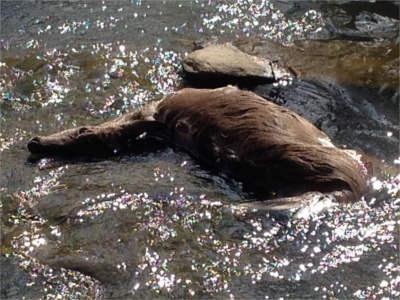Save the Rock Creek Deer calls for removing park from NPS control after 106 deer shot
Group Condemns National Park Service for Killing 106 Deer in Rock Creek National Park
Calls for Congressional Investigation into Park Mismanagement;
Says Rock Creek National Park should be removed from Park Service control
(Washington, D.C.) Members of the group 'Save the Rock Creek Park Deer" condemned the National Park Service today for killing 106 deer since January 2014 in Washington, DC's Rock Creek National Park.
"Park officials put a stable population of deer in the line of fire, when it's their own mismanagement of the park that should come under fire by Congress", said Mary Rowse, one of five DC residents and the international organization In Defense of Animals that sued the National Park Service in 2012 to prevent deer killing in the park. In March 2013, a federal judge ruled against the group and the Park Service killed 20 deer that month for the first time in the 123-year history of the park. The case is on appeal.
"The National Park Service has permitted the park's ecosystem to get seriously out of balance for decades", said Rowse. "The agency admits invasive plants are the park's number one problem, not deer, yet it is doing next to nothing about it. Invasive plants are actively preventing native plants from growing by changing the composition of the soil and destroying plant and animal habitats. The remedy is not to kill deer but to restore the balance in the park's ecosystem." Rowse said. "By killing deer, the National Park Service is violating its own management guidelines which are to maintain and foster natural ecosystem re-balancing processes. Killing native deer is incompatible with these guidelines. Removing invasive plants species is not. Rock Creek Park was established to maintain biodiversity. Officials have a mandate for maintaining plant and animal diversity because it helps boost ecosystem productivity. Congress must investigate why the agency is not doing a good job protecting the natural resources of this park", said Rowse.
Killing deer will do nothing to increase forest regeneration if the tree canopy is closed and there's poor light and soil in the park. Instead the Park Service should have controlled burns to clear younger growth and activate dormant seeds in the soil. In addition to undertaking a serious campaign to remove invasive species, the park should stop mowing areas and let them revert to forest or plant things there. The park could invite the public to plant acorns in the fall in a campaign to "Regenerate Our Forest".
Killing deer will do nothing to reduce the incidence of Lyme Disease because black legged ticks feed on many species of mammals and birds and most often pick up the disease by feeding on infected mice and chipmunks. So even if all the deer in the park were killed, the ticks would still pick up the disease from mice and chipmunks and be amply fed by squirrels, possums, raccoons, and other mammals and some birds.
Killing deer will do nothing to reduce the deer population because previously non-hunted populations of deer respond to hunting pressure with higher fertility. It's called the "rebound effect" and it means any remaining female deer will have increased birthrates that not only replace the deer killed but increase the overall size of the herd. This is why areas that begin killing deer never stop because killing doesn't reduce the population. Reproductive controls are the other thing that do and they do so without violence.
There are several reproductive control agents developed for wildlife that are practical, successful and more sustainable than killing. One example is the vaccine PZP that can be given to female deer through remote application by dart. The deer remain infertile for several years and can be re-vaccinated at relatively little expense--certainly less than hiring sharpshooters. The National Park Service has successfully used PZP to reduce deer populations on Fire Island, NY and on Fripp Island, SC where 600 deer were reduced to 300 in less than five years. PZP has also been used at the National Institutes of Standards and Technology (NIST) in Gaithersburg, Maryland. PZP is not yet registered by the EPA but it can be used in studies and Rock Creek Park would be an ideal environment for a study.
Rock Creek National Park belongs to the people of this nation and a majority of the public opposes the killing of deer in the park. The Washington Post twice polled its readers on this subject in April and December 2013 and each time 66% said sharpshooting wasn't necessary in the park. More than 16,000 people around the world have signed a change.org petition (https://www.change.org/petitions/national-park-service-don-t-kill-deer-in-our-nation-s-capital) opposing the killing of deer in Rock Creek Park. The sharpshooting option was overwhelmingly opposed by residents who came out to testify during the Park Service's public comment period. Many elected officials, including D.C. Delegate. Eleanor Holmes Norton, Maryland Rep. Chris Van Hollen and Virginia Rep. James P. Moran favor non-lethal methods for managing Rock Creek Park's deer.
"The park is no longer a place of refuge for deer or people, who, for over a century, have sought out its natural beauty for peaceful reflection. It is now a shattered sanctuary with guns, blood, fear and death", said Rowse. "What a delight it was to spot a graceful, gentle doe and fawn, or a magnificent buck standing in a glen. It is profoundly disturbing to know these beautiful, trusting, native creatures are no longer safe from human violence."

